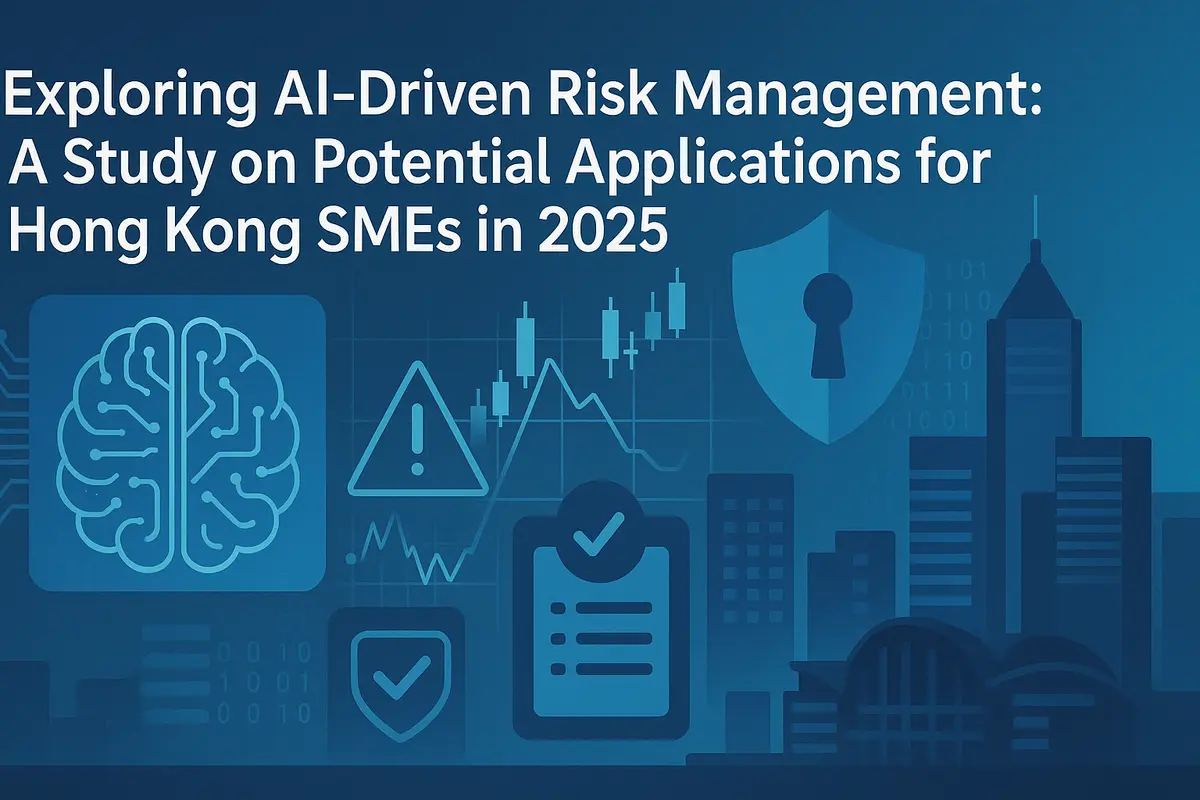
Exploring AI-Driven Risk Management: A Study on Potential Applications for Hong Kong SMEs in 2025
Introduction: The Evolving Risk Landscape for SMEs
In Hong Kong's dynamic business environment, small and medium-sized enterprises (SMEs) must navigate not only market competition but also a complex web of potential risks. Operational vulnerabilities (Operational Risk), financial uncertainties (Financial Risk), and evolving regulatory landscapes (Compliance Risk) present significant challenges. A single severe incident—whether an error, fraud, or penalty—can disproportionately impact an SME's stability and growth. This context necessitates exploring innovative risk management approaches.
Exploring AI's Potential in Risk Mitigation
Artificial Intelligence (AI) is emerging as a field with immense potential to enhance traditional risk management practices for SMEs. Rather than a mere replacement, AI offers possibilities for developing more proactive, data-driven, and potentially more efficient defense mechanisms. At its core, the concept leverages AI's pattern recognition and predictive capabilities as an intelligent analytical tool to help businesses identify and address potential threats earlier.
Potential AI Application Areas Under Exploration:
Current research and development are investigating AI's utility across various risk domains relevant to SMEs:
-
Financial Anomaly Detection (Exploring AI Financial Fraud Detection):
- Concept: Train AI models to learn typical financial transaction patterns for SMEs.
- Potential Application: Flag anomalies such as unusually large payments, transactions with unknown entities, or patterns suggesting duplicate invoicing, aiding early detection of errors or potential fraud while enhancing overall Financial Health.
-
AI-Assisted Contract Review (Exploring AI Contract Review & Analysis):
- Concept: Utilize Natural Language Processing (NLP) to analyze contract text.
- Potential Application: Develop tools to automatically scan contracts, highlighting potentially high-risk clauses, missing standard elements, or significant deviations from preset templates, prompting focused review by legal or management personnel to mitigate potential Legal Disputes.
-
AI-Enhanced Cybersecurity (Exploring AI Cybersecurity Solutions HK):
- Concept: Apply machine learning to analyze network traffic, user behavior logs, and threat intelligence feeds.
- Potential Application: Create systems capable of identifying novel attack patterns, malware signatures, or anomalous internal activities that might evade traditional rule-based systems, potentially strengthening defenses against Cyber Threats and safeguarding Data Security.
-
AI in Compliance Process Automation (Exploring AI Compliance Automation - RegTech):
- Concept: Automate specific checks against established regulatory requirements.
- Potential Application: For certain industry regulations (e.g., basic checks related to the Personal Data (Privacy) Ordinance (PDPO) when handling customer data), AI tools could potentially verify document completeness, monitor transactions against specific rules, or ensure process compliance, thereby reducing Compliance Risk burdens and penalty risks.
-
Supply Chain Risk Assessment (Exploring AI Supply Chain Risk Management):
- Concept: Integrate diverse data sources (supplier information, logistics data, public news) for analysis.
- Potential Application: Develop predictive models to assess Supply Chain Disruption likelihood, enabling businesses to proactively create contingency plans and enhance Business Continuity.
Integration Challenges and Opportunities
A key area of ongoing exploration is how to effectively integrate these potential AI capabilities into SMEs' existing operational workflows and IT systems. The goal is to move beyond standalone tools toward embedded intelligence that provides real-time insights and alerts within systems employees use daily. This integration presents both technical challenges and practical considerations but holds promise for making advanced risk monitoring more accessible and actionable.
Frasertec Limited: A Partner in Exploring and Developing AI Risk Solutions
When exploring AI applications, understanding Hong Kong SMEs' unique operational realities and resource constraints is crucial. Frasertec Limited, with over two decades of experience delivering customized IT solutions (https://www.frasertec.com/zh/Home/Services) in Hong Kong, actively researches and applies these emerging technologies.
We view AI not merely as a product but as a powerful toolkit requiring careful customization. Our expertise includes:
- Collaborative System Design: Partnering with SMEs to understand their specific risk concerns and explore how tailored AI logic can be viably embedded into their existing or new CRM, ERP, or financial management systems.
- Leveraging Cybersecurity Expertise: As part of comprehensive Cybersecurity Consulting & Solutions (https://www.frasertec.com/zh/Home/Services), researching and implementing advanced, potentially AI-enhanced threat detection and defense mechanisms.
- Agile Development for Specific Needs: Utilizing approaches like our AI Rapid Development Service (https://www.frasertec.com/zh/AIRapid) to quickly prototype and build targeted, cost-effective monitoring tools for high-priority risk areas (e.g., transaction monitoring), enabling iterative exploration and development.
Let's Explore the Potential Together
Robust risk management remains a cornerstone of sustainable business growth. AI presents compelling possibilities for enhancing these capabilities within the SME context. If you're interested in exploring how tailored AI-driven tools could address your specific risk management challenges, Frasertec Limited is ready and willing to collaborate—discussing, exploring, and jointly building your envisioned solutions.
Contact via WhatsApp: 852 25788828Important Notice:
This article discusses potential concepts and technological exploration areas regarding AI in SME risk management. The content is for informational sharing and discussion purposes only and does not constitute professional advice or directly implementable solutions for any specific situation. The actual application and effectiveness of these concepts largely depend on individual business circumstances, data availability, technical feasibility, and regulatory considerations. Any real deployment requires thorough evaluation and professional consultation. This article should not be regarded as an authoritative guide for practical operations.